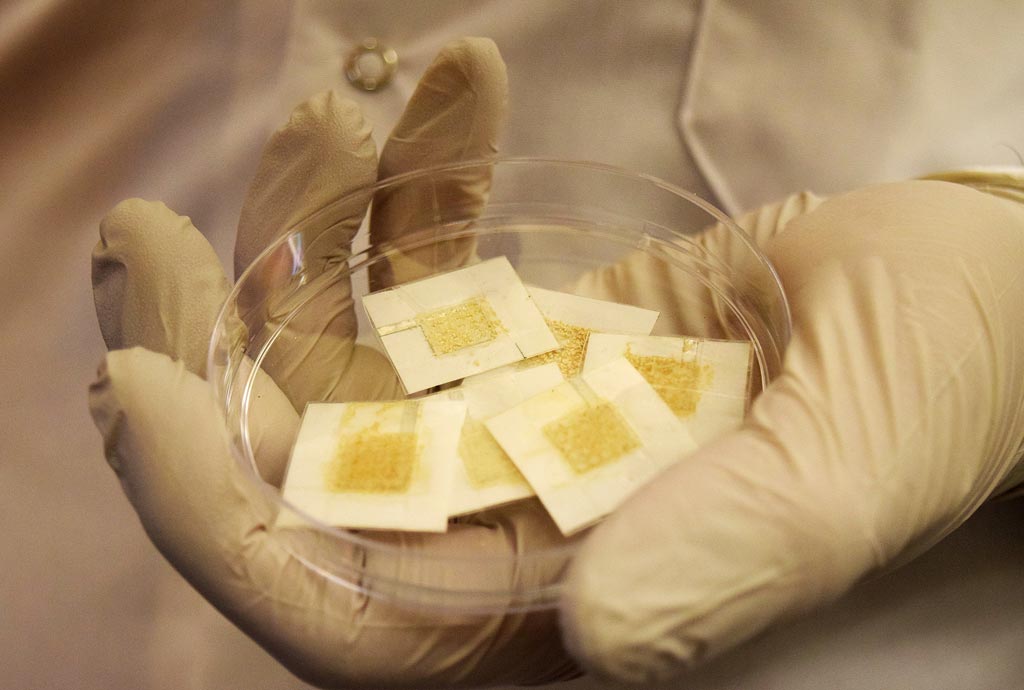Disposable Yeast Badges Detect Radiation Exposure Instantly
By MedImaging International staff writers
Posted on 20 Aug 2018
A biohybrid radiation-sensing platform based on yeast (Saccharomyces cerevisiae) cells can detect radiation damage by quantifying the metabolic activity of the microorganism population.Posted on 20 Aug 2018
Developed at Purdue University (Lafayette, IN, USA), the wearable, disposable sensor is a film‐type device fabricated on a paper substrate with yeast cells patterned between two electrodes. The yeast population is sensitive to radiation when dry, and is read by activating it with a drop of water. When the yeast cells are exposed to ionizing radiation and subsequently allowed to ferment a glucose solution, they exhibit an electrical conductivity lower than that of non-exposed yeast, and proportional to the measured impedance of the fermenting medium.

Image: Disposable yeast badges can detect radiation exposure (Photo courtesy of Kayla Wiles/ Purdue University).
The higher the radiation dose, the higher the percentage of yeast cells that die. Wetting the badge with water activates the cells that are still alive to consume glucose and release carbon dioxide (CO2), the same fermentation process responsible for brewing beer and making bread rise. When CO2 bubbles at the surface of the medium, ions also form, which increase the electrical conductivity of S. cerevisiae cells, which can be measured by hooking up the badge to a readout system.
In a study of the prototype device, an 18 × 18 mm2, 0.57 mm thick sensor with ground yeast filtered via a 50 µm mesh demonstrated sensitivity when exposed to radiocaesium (Cs‐137), with a minimum detectable dose of one milliard, comparable to that of current commercial badges. Examination of the yeast cultures under fluorescence microscopy suggested that the sensitivity was primarily due to damaged membranes in the cell wall and the mitochondria. The study was published on August 8, 2018, in Advanced Biosystems.
“Currently, radiology workers are required to wear badges, called dosimeters, on various parts of their bodies for monitoring their radiation exposure,” said senior author professor of electrical and computer engineering Babak Ziaie, PhD. “They wear the badges for a month or two, and then they send them to the company that made them. But it takes weeks for the company to read the data and send a report back to the hospital. Ours give an instant reading at much lower cost.”
Wearable radiation sensors (dosimeters) for workers in radiation‐intensive industries provide a measure of radiation exposure, but not of its effects on biological tissue.
Related Links:
Purdue University














